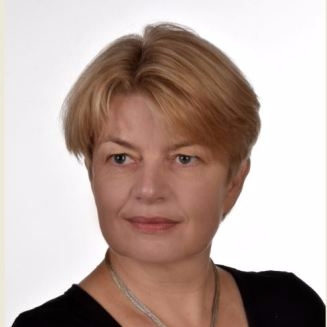Color in Architecture: Theory and Practice
A special issue of Arts (ISSN 2076-0752). This special issue belongs to the section "Applied Arts".
Deadline for manuscript submissions: closed (30 November 2021) | Viewed by 45986
Special Issue Editors
Interests: history of architecture and urban planning of the 20th century (modernism, Modern Movement: architectural form, color, construction and technologies); conservation and revalorization of Modern Movement buildings in architectural practice; history of town planning from ancient times to today
Interests: history of architecture of the 19th century; relationships between architecture and politics in the 1940s and 1950s in Poland and other countries of the former Eastern Bloc; revitalization of historical buildings and cities; history of town planning from ancient times to today
Interests: medieval castles, palaces and houses; history of architecture of the 12–18th century; conservation and revalorization in architectural practice
Interests: history of architecture and urban planning of the 20th century (modernism, functionalism, cubism, Modern Movement, etc.) in Czechoslovakia, Czech Republic, Slovakia, Europe, and all over the World
Special Issue Information
Dear Colleagues,
Color has been an inseparable feature of architecture for centuries. It depends on technological possibilities, fashion, style, and the preferences of the architect and investor. In different epochs, colors were given different and special meanings. There have been times of contempt for color, and times "calling for color". The psychological basis of the use of colors, and their influence on humans, were also important. Color could, therefore, perform a propaganda function, which is most easily perceived when analyzing “regime architecture”. This knowledge helps us understand an architectural work and its creator, as well as the times in which it was designed. There is no doubt that color enriches architecture, brings out depth and adds light to it. At the beginning of the 20th century, marked by Sir Arthur Evans' reconstruction activity in Knossos, the triumphant return of color was met with distrust and criticism from both conservators and less aware recipients of architectural works. Our fears and fascinations are characterized by an ambivalence that is difficult to explain. On the one hand, there is a growing awareness of the ubiquity of color in ancient architecture, from antiquity to late modernity, as well as an increase in the current research and the analytical and stratigraphic possibilities, which are extremely helpful in discovering the past. On the other hand, there is the fear of color, which is now perceived as out of date and unfashionable in the world of minimalism and transparency. Today, we are faced with serious decisions related to the restoration, conservation and revalorization requirements of architecture. Unfortunately, original color has turned out to be an often elusive feature of buildings that disappears over many years, or even centuries, of use. Knowledge about it is necessary in order to take appropriate actions related to the protection of created architecture, both in the distant past and in the 20th century. In the proposed Special Issue of "Arts", we are seeking articles that will reveal the richness of colors in architecture over the centuries, and show the possibilities of using the latest knowledge in a non-invasive way, in line with the contemporary conservation doctrine and respect for authenticity. We would be grateful for articles that not only discuss the results of research conducted in historical buildings, but also theories about colors in architecture and their application in practice.
Prof. Dr. Jadwiga Urbanik
Prof. Dr. Agnieszka Tomaszewicz
Prof. Dr. Małgorzata Chorowska
Prof. Dr. Vladimir Slapeta
Guest Editors
Manuscript Submission Information
Manuscripts should be submitted online at www.mdpi.com by registering and logging in to this website. Once you are registered, click here to go to the submission form. Manuscripts can be submitted until the deadline. All submissions that pass pre-check are peer-reviewed. Accepted papers will be published continuously in the journal (as soon as accepted) and will be listed together on the special issue website. Research articles, review articles as well as short communications are invited. For planned papers, a title and short abstract (about 100 words) can be sent to the Editorial Office for announcement on this website.
Submitted manuscripts should not have been published previously, nor be under consideration for publication elsewhere (except conference proceedings papers). All manuscripts are thoroughly refereed through a double-blind peer-review process. A guide for authors and other relevant information for submission of manuscripts is available on the Instructions for Authors page. Arts is an international peer-reviewed open access semimonthly journal published by MDPI.
Please visit the Instructions for Authors page before submitting a manuscript. The Article Processing Charge (APC) for publication in this open access journal is 1400 CHF (Swiss Francs). Submitted papers should be well formatted and use good English. Authors may use MDPI's English editing service prior to publication or during author revisions.
Keywords
- color
- architecture of: antiquity, middle ages, modernity, 19th century, 20th century, modernism, contemporary
- stratigraphic research, heritage, reconstructions







